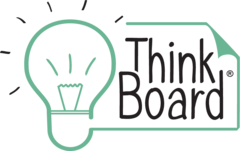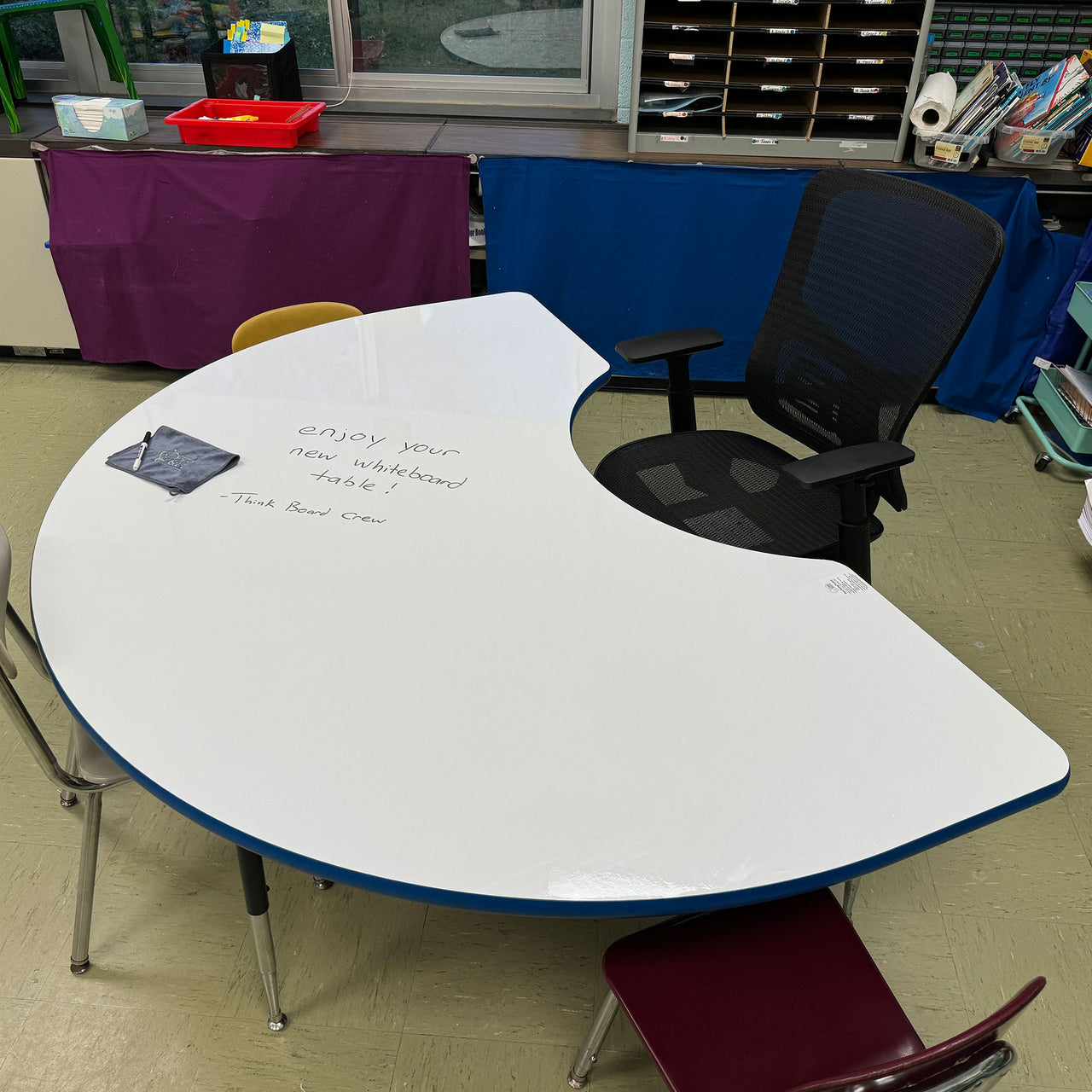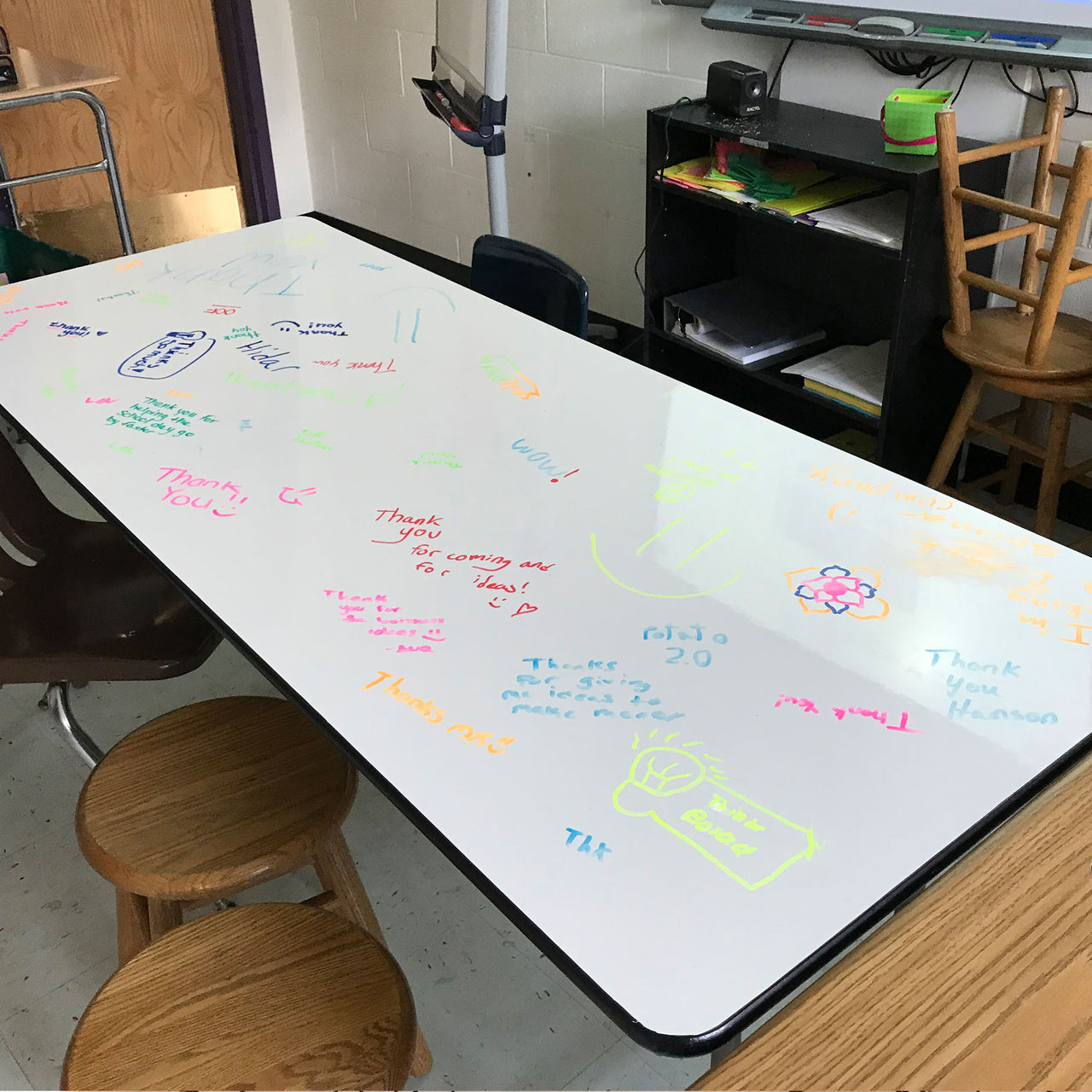Why You Should Skip the Whiteboard Paint (with Pictures!)
Why You Should Skip the Whiteboard Paint
You’re thinking about revamping your old whiteboards or chalkboards with some of that whiteboard paint you've heard about, right?
Look at the difference between whiteboard paint and Think Board from a real classroom with Hanson, our founder.
Dont Paint Whiteboards with Whiteboard Paint - Walltalkers alternatives Dry Erase Paint substitute - YouTube
If you're more of a reader, keep reading!
Before you grab a paintbrush, there are a few things you need to know about whiteboard paint.
From a distance, it can sometimes be hard to tell the difference between a whiteboard, whiteboard paint, and whiteboard film.
While this isn't a totally fair comparison, this picture gives a great contrast between the whiteboard paint and Think Board. (The whiteboard paint in this photo was about 18 months old compared to a two month old demo Think Board we put up for a math teacher.)

Obviously, Think Board is a whiter color and does a better job of brightening the classroom.
Here are the main differences you can't immediately see.
Whiteboard Paint tends to erase worse, has a 10x shorter lifespan, and peels and cracks when compared to Think Boards.
Here are the reasons why that is:
1) It’s Just Not the Same Quality
Whiteboard paint, no matter how smooth you get that surface before painting, just misses the mark(er).
That's because whiteboard paint is a liquid and dries into a solid.
If you're not very detail-oriented, you'll leave drops, drips, and bumps behind.
Texture is what makes whiteboard paint hard to erase, making it really easy to make a mistake with whiteboard paint.
At the very bottom of this article, you'll see a picture with tons of roller brush marks from a bad paint job.
Whiteboard paints look sleek and cool when they are brand new, but they tend to fall short when it comes to erasing, which is kind of the whole point of a whiteboard.
2) Peeling Problems
There's a durability issue. It's not much of a problem on walls.
BUT
Paint tends not to stick very well on a super smooth surface like a whiteboard.

Imagine going through all that effort, only for it to start flaking away.
It’s not just an eyesore; it’s a redo waiting to happen.
It's worth it to do it right with a product designed to last.
What's the Better Route?
Resurfacing Films
So, what’s the better option? We recommend (and this is a totally biased but honest opinion) Think Board resurfacing films. Think Board goes over your old boards, smoothing out imperfections and leaving you with a surface that’s usually better than the original. It's like giving your whiteboard a whole new lease on life.
Our installers can come in, assess the damage, and clean up old whiteboard paint and old whiteboard products before installing a new whiteboard over the top.
Think Boards are Easy to Install and Last Ages
Think Boards are super easy to install and last for 10 to 15 years in a classroom! (That's basically infinity in a regular home office.)
Plus, if you're a handy school admin/teacher, you can order a kit online and do it yourself in an afternoon. No fuss, no mess. We send you the same toolkit we give our installers to make it easy. Check out Think Board's resurfacing films for a reliable solution. Here's a link to our install videos if you're thinking about giving it a shot! https://youtu.be/Ag_LVdMdk1w
White Board Paint FAQs
How to Make Whiteboard White Again?
If your whiteboard has lost its luster and looks more grey than white, there are a few tricks you can try before going for a full resurface. Cleaning the board with a clean cloth, water, or isopropyl alcohol can remove stubborn stains and restore some of its original brightness. This is temporary but important if parents are visiting the classroom!
What Spray Can I Use on Whiteboard?
While most whiteboards should only really be cleaned with whiteboard spray cleaners or soap and water, Think Board can be cleaned with 70% isopropyl alcohol. Regular white boards and whiteboard paint can be easily damaged from rubbing alcohol, but Think Boards will remain clean and unimpaired.
Can You Recoat a Whiteboard?
Yes, you can recoat a whiteboard, but whiteboard paint might disappoint you. Whiteboard paint often chips and peels quickly due to the board’s smooth surface. A better alternative is to use a resurfacing film from a reputable company like Think Board, which adheres better and lasts longer.
Can You Paint Over a Whiteboard?
Technically, you can paint over a whiteboard, but it is advised against. Paint tends to flake and peel. It also doesn't necessarily dry smooth, making the surface rough and difficult to erase.
Can You Use Paint on a Whiteboard?
You can use whiteboard paint, but it's not ideal. Even skillfully applied whiteboard paint tends to chip and peel quickly in a typical classroom environment. Tape and magnets can also do a lot of damage to white board paint.
What are the Disadvantages of Whiteboard Paint?
Whiteboard paint has three main cons:
1) Poor adhesion to whiteboards, which leads to peeling and chipping. Tape sticks harder to whiteboard paint than whiteboard paint does to a whiteboard, causing frequent peeling.
2) It's very dependent on the painter's attention to detail and surface prep when on walls. It's easy to mess up.
3) Dry-erase paint gets easily scuffed up, especially on walls, because a wall is softer than a whiteboard.

Can You Put Chalkboard Paint on a Dry Erase Board?
You can, but similar to whiteboard paint, chalkboard paint probably won't stick well. It might not be a problem at first, but you'll likely see peeling once you try to deep clean the chalkboard paint with some water. Avoid using strong tapes because they can stick harder to the paint than the paint does to the whiteboard, causing peeling.
What Kind of Paint is Used for Whiteboards?
Whiteboard paint is typically a type of epoxy or enamel paint that's designed to create a dry-erase surface. However, its effectiveness varies widely based on application and environment.
In short, while whiteboard paint might seem like a quick fix, it’s kind of a gamble.
It can be very difficult to follow the directions exactly and roll out the paint perfectly evenly.

(Yup, that's whiteboard paint on a wall. The paint roller left a lot of texture where ink gets stuck.)
Avoid whiteboard paint and stick with Think Board.
With our resurfacing films, you’re guaranteed to get that smooth, durable finish that’ll keep your teaching space looking sharp and functional.








